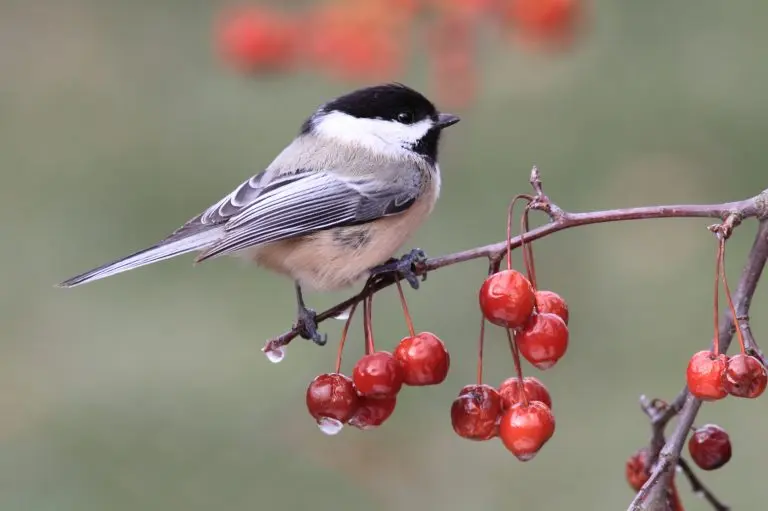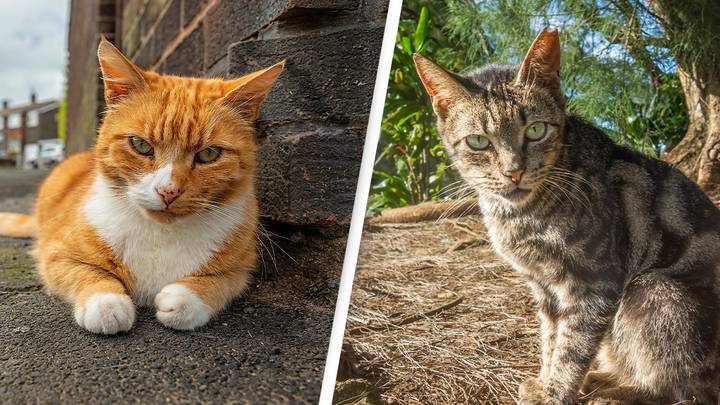Winterwatch: Identifying Common Winter Birds

Table of Contents
Common Winter Birds of North America
Identifying winter birds requires keen observation skills. This section focuses on key characteristics of prevalent North American winter birds, helping you confidently spot these feathered friends during your Winterwatch adventures. Remember to always use binoculars for detailed observation and a field guide for species confirmation.
Key Characteristics for Identification: When identifying winter birds, focus on these key features:
- Size and Shape: Note the overall size of the bird (small, medium, large) and its body shape (slender, stout, etc.).
- Plumage: Observe the color and pattern of the feathers, including the breast, back, wings, and tail.
- Beak Shape: The beak's shape often reflects a bird's diet.
- Behavior: Pay attention to how the bird moves, feeds, and interacts with its environment.
Examples of Common North American Winter Birds:
- Northern Cardinal: Easily identified by the male's vibrant red plumage and the female's more subdued reddish-brown. They possess a conical beak perfect for cracking seeds and often frequent bird feeders. Look for their distinctive crest.
- Downy Woodpecker: The smallest woodpecker in North America, this bird is characterized by its black and white checkered pattern. They are often spotted drumming on tree trunks in search of insects.
- American Robin: While some robins migrate, many remain throughout the winter. Their iconic orange breast and behavior make them easily recognizable even in snowy conditions.
- Blue Jay: This bold bird is unmistakable with its bright blue, white, and black plumage. Their loud calls are easily heard, and they are often seen foraging for nuts and seeds.
- Black-capped Chickadee: A tiny but tenacious bird, the black-capped chickadee is easily identified by its black cap, bib, and white cheeks. They're frequently found in flocks and are adept at finding food sources in winter.
- Dark-eyed Junco: These are relatively common winter visitors in many parts of North America, with a slate-gray back and a lighter underbelly. They are often found foraging on the ground.
Birdwatching Equipment and Techniques for Winter Identification
Effective winter birdwatching requires the right equipment and techniques to overcome the challenges of shorter days and colder weather. Proper preparation is key to a successful Winterwatch.
Essential Equipment:
- High-quality Binoculars: Binoculars with 8x42 or 10x42 magnification are ideal for winter birdwatching. Look for low-light capabilities to see birds effectively even on overcast days.
- Field Guide: A comprehensive field guide specific to your region will be your invaluable companion for identifying birds. Choose a guide with detailed illustrations and descriptions.
- Spotting Scope (Optional): A spotting scope provides higher magnification for observing distant birds.
- Camera (Optional): Capture images of birds for future identification and to share your Winterwatch discoveries.
Winter Birdwatching Tips:
- Patience is Key: Birds can be less active in winter, requiring patience and careful observation.
- Dress Warmly: Layer your clothing to stay warm and comfortable during extended periods outdoors.
- Be Quiet and Still: Sudden movements can scare birds away. Approach observation spots slowly and quietly.
- Early Morning and Late Afternoon: These times often offer the best light and increased bird activity.
Understanding Bird Behavior in Winter
Winter significantly impacts bird behavior, affecting their foraging strategies, social interactions, and even migration patterns. Understanding these changes is crucial for successful winter bird identification.
Winter Bird Behavior Adaptations:
- Flocking Behavior: Many birds flock together for warmth and protection against predators. Observe the size and composition of flocks.
- Foraging Strategies: Birds adapt their diets to winter's limited food sources. Some birds rely on stored food, others switch to seeds, berries, nuts, or insects found under tree bark.
- Migration Patterns: Some birds migrate to warmer climates, while others remain resident, adopting strategies to survive the colder months.
- Shelter Seeking: Birds seek shelter from harsh weather conditions, often using dense vegetation or cavities in trees.
Setting Up a Winter Bird Feeder
Attracting birds to your backyard can enhance your Winterwatch experience significantly. Providing supplementary food can increase your chances of observing diverse bird species close to home.
Tips for Attracting Birds:
- Choose the Right Feeder: Offer a variety of feeders to cater to different bird species and feeding preferences (tube feeders, hopper feeders, suet feeders).
- High-Quality Birdseed: Use a mix of seeds, nuts, and suet to provide a nutritious diet.
- Cleanliness: Regularly clean feeders to prevent disease.
- Placement: Position feeders strategically, away from windows and predators, offering good visibility.
Conclusion:
This Winterwatch guide has provided insights into identifying common winter birds, utilizing appropriate equipment, and understanding their unique winter behaviors. By applying these tips, you can significantly enhance your birdwatching experience and enjoy the beauty of winter avian life. Learning about bird identification is rewarding, and contributes to a greater appreciation for the natural world.
Call to Action: Start your own Winterwatch adventure! Grab your binoculars, field guide, and warm clothes and head out to identify the fascinating array of winter birds in your area. Enjoy the thrill of winter bird identification and contribute to citizen science by documenting your observations and sharing your Winterwatch discoveries with others. Remember, even a simple backyard Winterwatch can bring immense joy and deepen your connection with nature.

Featured Posts
-
 Black Widow I Skarlet Gioxanson Leei Antio
May 13, 2025
Black Widow I Skarlet Gioxanson Leei Antio
May 13, 2025 -
 Community Highlights Earth Day Celebration May Day Parade And Junior League Gala
May 13, 2025
Community Highlights Earth Day Celebration May Day Parade And Junior League Gala
May 13, 2025 -
 Hamas Hostage Release Edan Alexander And Others Expected By Ramadans End
May 13, 2025
Hamas Hostage Release Edan Alexander And Others Expected By Ramadans End
May 13, 2025 -
 Poy Na Deite Agones Serie A Online And Tv
May 13, 2025
Poy Na Deite Agones Serie A Online And Tv
May 13, 2025 -
 The Big Issues Childrens Competition And The Winner Is
May 13, 2025
The Big Issues Childrens Competition And The Winner Is
May 13, 2025
Latest Posts
-
 Pochemu Skarlett Yokhansson Ne Delaet Selfi Obyasnenie Aktrisy
May 13, 2025
Pochemu Skarlett Yokhansson Ne Delaet Selfi Obyasnenie Aktrisy
May 13, 2025 -
 Colin Josts Lower Salary Compared To Scarlett Johansson A Look At Their Finances
May 13, 2025
Colin Josts Lower Salary Compared To Scarlett Johansson A Look At Their Finances
May 13, 2025 -
 Black Widow To Telos Mias Epoxis Gia Ti Skarlet Gioxanson
May 13, 2025
Black Widow To Telos Mias Epoxis Gia Ti Skarlet Gioxanson
May 13, 2025 -
 Skarlett Yokhansson Pravda O Nezhelanii Delat Selfi S Poklonnikami
May 13, 2025
Skarlett Yokhansson Pravda O Nezhelanii Delat Selfi S Poklonnikami
May 13, 2025 -
 I Skarlet Gioxanson Apoxaireta Tin Black Widow
May 13, 2025
I Skarlet Gioxanson Apoxaireta Tin Black Widow
May 13, 2025
